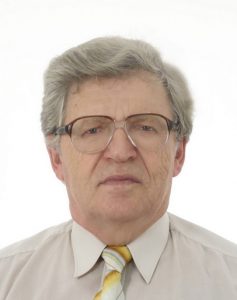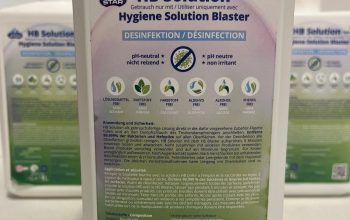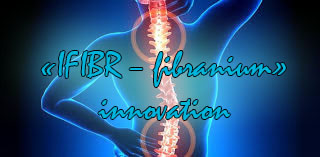
Prof. V. I. Slesarev, Grand PhD
Water is a precious gift of nature. It was in water that life initiated, and life won’t be possible without water. Water molecule issues related to its structure were discovered as early as in the XX century. It was proved that the geometry of the H2O molecule is variable and it depends on the state of water, while aspiring to reach the golden ratio. At the same time, water as a matter in condensed states presents an entire range of issues, many of which still lack a solution. In condensed states, every H2O molecule forms 4 hydrogen bonds, acting as a donor of two of its protons and as an acceptor of two protons of the neighbouring molecules. This leads to the formation of a universal network of hydrogen bonds in water. No single molecules of H2O or its associates exist outside this network. It is the double nature of this hydrogen bond, which is electrostatic and covalent, as well as the increased tendency of the H-net to structural dynamism, that underlie many of the issues associated with water.
Water in condensed states is an open, thermodynamically unbalanced, non-linear, self-oscillating and self-regulatory supramolecular aqua system. Its integrity is assured through the uniform polymorphous network of hydrogen bonds characterized by extreme structural dynamism. This dynamism is proved through calculations of the duration of the settled life of an H-bond made by the method of molecular dynamics and Monte Carlo method: t = 10-11 – 10-13 sec.
Molecular solutions and colloidal solutions are supramolecular aqua systems, too. Their properties are reflected in their definitions. As all living beings contain more than 95% of water in their molecular composition, then biosystems should be viewed as suprabiomolecular aqua systems. Their molecular continuum is assured by the uniform and dynamic H-nets.
Water and all aqua systems, both living and non-living, due to their openness, thermodynamic non-equilibrium, nonlinearity, self-oscillation, supramolecular structure and high dynamism of their H-nets, are natural universal aqua radio systems. They emit and receive, transform and amplify various external radiations, as well as aqua radiation. The nature of aqua radiation is both acoustic and electromagnetic, its frequencies range from a few fractions of Hertz to 1015 Hertz, with a power under 10-10W/cm2. This extremely high range of frequencies and the double nature of aqua radiations facilitate resonances with water. Only in the XX century aqua radiations were observed experimentally; then they were attributed to the living beings and not to the water. These observed radiations were called mitogenetic or morphogenetic field, or biofield. However, these terms do not reflect the physical nature of the phenomena. In reality, biofield is a combination of various sources and of known physical fields, while morphogenetic radiations are aqua radiations of the systems of a living cell.
The action of the aqua radio properties is based not on the “free” electrons, but on the structural-dynamic and self-oscillating properties of the H-nets of aquasystems which contain not only molecules of water, but also its aqua-ions Н+ and ОН– and aqua-radiacals •Н0 and •ОН0. The latter act as electron carriers in water.
Thanks to the aqua radio properties and due to the fact that water is a receiver of faint external radiations and of its own radiations, water has the capacity for aqua communication. It is characteristic of non-living and living water-containing systems; it is the capacity of water to reflect, conserve, transfer and lose the level of organisation of the affecting substance or of the affecting physical field. Water encodes this information in the structure of certain segments of the H-net by shaping these into aquamodels of exerted influence.
Aqua communication follows from the law of conservation and conversion of energy in the course second-order phase transitions in water. They start as the resonance and local polymorphism of the uniform dynamic H-net of the water. These result in the immediate formation of aqua models of exerted influence in the water and in a local instantaneous increase of the level of organisation of the system through simultaneous decrease of its randomness, all this without any significant change in the internal energy of the system. When the influence is eliminated, the aqua system slowly returns to its original state, and we can observe a local temporal hysteresis of destruction of aqua models by the exerted influence with a decrease in the level of organisation and a parallel increase in the randomness to the original level of organisation. This structural and temporal hysteresis is commonly known as “memory” of the water.
As aqua communication is based on aqua radiations of aqua models and on the resonance and wave mechanism of their action, then aqua communication is possible through direct contact and at a distance. For instance, it may pass through polymer film, wood, metal, or through a conductor, or in the form of a radio signal. This was proved by V. P. Kaznacheev (1980) in his experiments on distance cell interaction, which, however, was not explained. In 1994, N.L. Lupichev described experiments in which microorganisms reacted both to the added water solution of the affecting substance, and at a distance. Still, the results were not given any explanation. Nevertheless, the biotests conducted by both researchers clearly demonstrated the phenomenon of aqua communication and the capacity of a drug to affect a living being not only directly, according to the “key to the lock” principle (mechanic lock model), but also according to the resonance and wave mechanism (radio lock model). This mechanism may be called aqua communication mechanism. This interaction mechanism has never been studied before.
Thus, living beings turn out to be sensitive not only to the affecting substance, but also to the aqua radiation of its aqua models. This allows to assume that the aqua radio properties of water and of living beings, as well as the phenomenon of aqua communication may be seen as the physicochemical basis of the action of very thin solutions of medicines, namely homeopathic medicines. These medicines do not have an effective agent, only its aqua models. The aqua radiations of these aqua models influence the whole body, including the affected organ. When the similarity principle is observed, the person recovers. The efficiency of the principle “similar cures similar” allows to assume that both homeopathy and allopathy are based on the resonance and wave mechanism. This mechanism helps to understand better the high sensitivity of men to hirudotherapy, Ayurveda, electroacupuncture according to Voll and physiotherapy. Recently, many physiotherapists have achieved a considerably higher efficiency of the radiations by decreasing their power to the level comparable with the power of aqua radiations of the human body. The resonance and wave mechanism explains the good permeability of the body to very faint short-wave radiations.
Sonar operators know well that sometimes waveguides form in seas and oceans, and they increase underwater audibility and detection range dramatically. We suppose that these are dynamic dielectric aqua waveguides formed within water H-net. Doctors and biologists have long been familiar with the acupuncture chakra system that assures the communication of the organs between each other and their connection with the environment. We suggest that the terms “channels” and “meridians” used to describe this system be replaced with the term “aqua waveguides” which reflects better the essence and the mechanism of action of this highly important system based on the aqua radio properties of all the living beings.
Recently, interesting results have been received by the Nobel Prize Winner Luc Montagnier. However, it must be understood that when he writes on the radio waves emitted by DNA molecules, these are, in fact, aqua radiations of the contact layers of water surrounding DNA molecules, that is, aqua radiations of its aqua models. These aqua radiations are modulated by the level of organisation of the DNA at a point of time. Apparently, thanks to its aqua radio properties, water plays a significant role even in the course of cell mitosis and the transfer of genetic code, to which it contributes its wave component. Consequently, biologists should revisit the role of water in living organisms and vital functions, as they are based on second-order phase transitions in biosystems.
The aqua radio properties and the phenomenon of aqua communication of water were proved through experiments consisting in the study of reagentless changes in water influenced by the major physical fields: magnetic, electrical and electromagnetic fields, as well as acoustic field, i.e. fluctuations in the environment. We conducted the studies using the methods of potentiometry and IR-spectroscopy. As a result, we determined the cluster-clathrate mechanism of these changes based on a second-order phase transition related to the local changes in the structure of the aqua fragments of the H-net of the water and initiated by the influence of the faint and very faint radiation or acoustic vibrations of the environment. This influence creates a resonance with specific clusters, or fragments of the H-net of the water. The resonance makes them adapt by forming aqua models of the influence. If a hollow space is present in them that may be filled with a water particle (H2O molecule, aqua-ion Н+ or ОН–, or aqua-radical •Н0 or •ОН0), then the respective aqua clathrates are formed. We named this process “aqua clathration”, to replace the less appropriate term “hydrophobic bond”. Through aqua clathration of the said water particles, their chemical activity is reduced, and, consequently, the physical and chemical properties of the water are altered. Nevertheless, this alteration of water properties is temporary and is caused by a structural and temporal hysteresis that completes its second-order phase transition. The reagentless alteration of the acid-base, oxidation-reduction and complexing properties of water were well controlled through potentiometry, while the changes in its physical properties were observed through IR-spectroscopy, and, sometimes, surface tension factor.
Reagentless alteration of water properties serves as a basis in the water conditioning process, both in nature (spring water) and artificially. Entering in contact with various indissoluble minerals, water changes its properties differently due to the changes in its H-net. These changes are temporary, and they are observed mostly through the senses by ordinary people or tasters. Water conditioning through this method is possible thanks to the aqua radiation of the aqua models of the layers of water adjacent to the mineral. This aqua radiation is modulated by the level of organisation of the crystal lattice of the mineral. Their influence initiates the respective second-order phase transition in water; the water preserves for a certain time the properties conferred to it by the aqua radiations of the aqua models, thanks to the structural and temporal hysteresis. The presence of aqua models and their participation in this process is confirmed by the distance transfer of the properties of the minerals sealed in a glass capsule to water (Vitajuwel, Austria). Another proof is provided by the method of water conditioning with Aquadisc (L. Izvekov, Russia). Its inventor claims that Aquadisc contains information recorded by a radiotechnical method from the water of a natural spring, which the disc further transfers to the water that is treated with it. This is confirmed by the photographs of the crystal of frozen water: original water, spring water and the water treated with Aquadisc.
Reagentless water conditioning usually consists in treating water with a magnetic field, by letting the water pass through a magnet, using magnetic mugs, Grander and Gruber devices (Austria), etc. Biotests show that magnetic water treatment apparently increases its physiological value, that is, it vitalizes the water. Dynamic IR-spectroscopy proved that such treatment increased the structural dynamism of the H-net of the water. Apparently, the body finds it easier to produce the water it needs at a particular point of time from the treated water.
The treatment of water with a continuous electric current provided that a membrane is placed between the two electrodes results in the creation of two types of water: anolyte and catholyte.
Anolyte is known as the “dead water”; its рН=2,0-2,5, it has oxidizing capacity, and its reduction potential equals ORP = +(700-800)mV. These properties are due to the active forms of oxygen that are in the active state, and the major part of the in the aqua clathrated state. They dissolve gradually and maintain the oxidizing capacity of the anolyte within 8-10 days, after which it turns into regular water, with acid character. Fresh anolyte is a powerful disinfectant.
Catholyte is known as the ”live water”; its pH=10-11, it has strong reduction capacity, its reduction potential ORP = -(600-800)mV, due to the presence of free hydrogen, part of it – in aqua clathrated state. This source of free corpuscular hydrogen maintains the reduction capacity of catholyte during 24-48 hours only. Fresh catholyte is a powerful radio- and oncoprotector.
The treatment of water with continuous electric field without a membrane results in the formation of water with pronounced antioxidant qualities, its reduction potential being ORP = -(200-300)mV. This may be explained by the lower stability of aqua clathrates of active oxygen forms. Antioxidant water loses its reductive capacity within 24-36 hours. Fresh antioxidant water acts as a radio- and oncoprotector.
To sum up, due to aqua radioproperties and second-order phase transitions, water and aqua systems of all living beings are capable of:
- aqua communication;
- reagentless alterations in their properties under the influence of various types of radiation;
- acting as detectors of organized and chaotic influences
- organized influence encourages structural harmonisation of the aqua fragments of the H-net;
- while chaotic influence leads to the degradation of their structure;
- forming dynamic dielectric waveguides for their aqua radiation in te H-nets of both their proper and of external aqua systems by relay method;
- forming aqua holograms;
- aqua location.
The term “biolocation”, as well as the process itself, are not recognized by the official science. We suggest the term “aqua location” specifying the substance on the properties of which the process is



